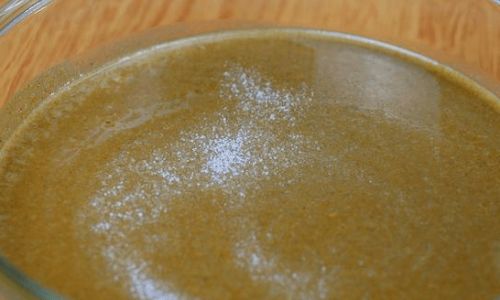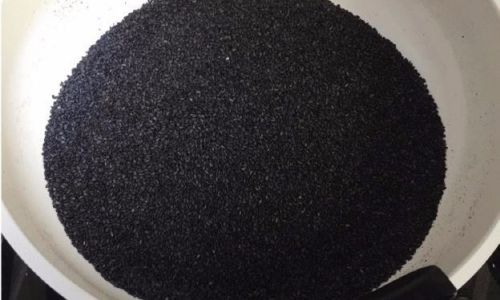Introduction
Sesame paste, also commonly known as tahini or simply sesame sauce, is a staple in many cuisines worldwide. Its rich, nutty flavor and creamy texture make it an ideal ingredient for dishes ranging from dips and spreads to dressings and marinades. However, one question often arises among home cooks and food enthusiasts: can bulk sesame paste be refrigerated? This inquiry stems from the desire to preserve the freshness, taste, and texture of sesame paste, especially when purchased in larger quantities. In this comprehensive analysis, we will explore the intricacies of storing bulk sesame paste, the effects of refrigeration, and alternative storage methods to ensure optimal preservation.
Understanding Sesame Paste

Before diving into the storage question, it’s crucial to understand what sesame paste is and how it’s made. Sesame paste is derived from sesame seeds, which are roasted, ground, and then blended with oil (usually sesame oil) to achieve a smooth, creamy consistency. The roasting process enhances the natural oils and flavors of the seeds, giving sesame paste its distinctive nutty aroma and taste.
Sesame paste contains high levels of unsaturated fats, proteins, and various nutrients such as calcium, iron, and magnesium. These components make it susceptible to oxidation and rancidity over time, especially when exposed to heat, light, and air. Therefore, proper storage is essential to maintain its quality and extend its shelf life.
The Refrigeration Debate
The question of whether bulk sesame paste can be refrigerated often generates mixed opinions. Some advocate for refrigeration to slow down the oxidation process and prevent rancidity, while others argue that refrigeration can alter the taste and texture of the paste. To clarify this debate, let’s examine the pros and cons of refrigerating bulk sesame paste.
Pros of Refrigeration

-
Extended Shelf Life: Refrigeration significantly slows down the chemical reactions that lead to rancidity in sesame paste. By storing it in a cold environment, you can extend its shelf life by several months, allowing you to enjoy its freshness for longer periods.
-
Preservation of Nutrients: Cold temperatures help preserve the vitamins and minerals in sesame paste, ensuring that you get the maximum nutritional benefit from each serving.
-
Prevention of Mold Growth: Refrigeration creates an unfavorable environment for mold and bacteria, reducing the risk of contamination and spoilage.
Cons of Refrigeration
-
Texture Changes: One of the primary concerns with refrigerating sesame paste is the potential change in texture. Cold temperatures can cause the fats in the paste to solidify, leading to a harder, less spreadable consistency. This can be particularly problematic for recipes that require a smooth, creamy texture.

-
Flavor Alteration: Refrigeration can also alter the flavor of sesame paste, making it less aromatic and nutty. The cold environment can mute the natural oils and flavors, reducing the overall appeal of the paste.
-
Separation and Oil Separation: Refrigerated sesame paste may experience separation, with the oil separating from the solid particles. This requires mixing before use, which can be inconvenient and sometimes difficult to achieve a perfect consistency.
Alternative Storage Methods
Given the pros and cons of refrigeration, are there alternative storage methods that can preserve the quality of bulk sesame paste without altering its taste and texture? Absolutely. Here are some effective alternatives to consider:
-
Pantry Storage: For short-term storage, keeping sesame paste in a cool, dark pantry can be sufficient. Avoid areas with direct sunlight and high temperatures, as these can accelerate oxidation and rancidity.

-
Airtight Containers: Using airtight containers or jars can help prevent oxygen exposure, which is a major cause of rancidity. Ensure that the container is clean and dry before adding the sesame paste to avoid contamination.
-
Freezing: For long-term storage, freezing is a viable option. Transfer the sesame paste into freezer-safe containers or ice cube trays, and freeze until solid. Once frozen, you can transfer the blocks or cubes to a freezer bag for easier storage. To use, thaw in the refrigerator overnight or place a frozen cube in a bowl of hot water for quick thawing. Freezing preserves the quality of sesame paste for several months but may still cause slight texture changes upon thawing.
-
Oxygen Absorbers: Using oxygen absorbers in airtight containers can further extend the shelf life of sesame paste. These small packets absorb oxygen, creating an anaerobic environment that slows down the oxidation process.
Best Practices for Storing Bulk Sesame Paste
Regardless of the storage method you choose, there are several best practices to ensure optimal preservation of bulk sesame paste:

- Label and Date: Always label your containers with the date of purchase or storage to keep track of how long the sesame paste has been stored.
- Use Clean Utensils: Avoid cross-contamination by using clean utensils when scooping or transferring sesame paste.
- Stir Before Use: Regularly stir the sesame paste, especially if it has been stored for a while, to prevent separation and maintain a uniform consistency.
- Monitor for Signs of Spoilage: Regularly check for signs of spoilage, such as off odors, mold growth, or discoloration. Discard any sesame paste that shows signs of spoilage.
Conclusion
In conclusion, the question of whether bulk sesame paste can be refrigerated is not a straightforward yes or no. While refrigeration can extend its shelf life and preserve nutrients, it can also alter the taste and texture of the paste. Alternatively, storing sesame paste in a cool, dark pantry, using airtight containers, freezing, or employing oxygen absorbers can provide effective preservation without compromising its quality. Ultimately, the best storage method depends on your personal preferences, the length of storage needed, and how you plan to use the sesame paste. By following best practices and regularly monitoring for signs of spoilage, you can ensure that your bulk sesame paste remains fresh, nutritious, and delicious for as long as possible.





0 comments